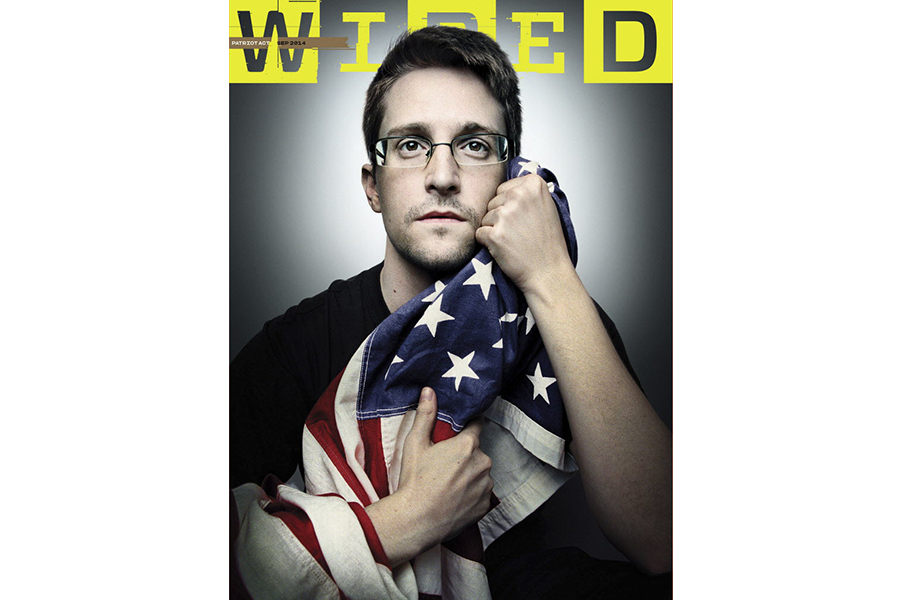Does this photo tell us what Edward Snowden stands for?
Loading...
No matter your political stance, the image is eye-grabbing: famed whistleblower Edward Snowden stares into the distance as he clutches an American flag to his chest, as though protecting the thing he holds most sacred.
That's the picture gracing the current cover of Wired magazine and it's causing quite a stir among supporters and opponents alike of the man who pulled back the curtain on rampant NSA spying programs by fleeing the country and leaking classified documents to journalists just over a year ago.
The photo was taken by world-famous photographer Platon Antoniou, whose portraits include such notable figures as Vladamir Putin and Barack Obama, and accompanies a lengthy profile of Mr. Snowden by James Bamford.
In a story detailing the context of the photo shoot, Wired editor in chief Scott Dadich writes that while he and the photo staff waited nervously in their hotel room before meeting Mr. Snowden, Snowden himself was calm and at ease throughout the process – "Call me Ed" is how he greeted the journalists, an almost comical attempt at repartee.
During the photo shoot in Moscow, where Snowden currently resides in exile, Mr. Dadich describes how Platon (who goes only by his first name) presented Snowden with a series of props to appear in the photos with him – a black t-shirt with the word "SECURITY" printed on both the front and back, another black t-shirt featuring a screaming eagle, and, of course, the American flag. The same flag, Dadich notes, that Platon used for his photo of Pamela Anderson that appeared on the cover of George Magazine in 1998.
Dadich writes:
Platon asked him what he'd do with it in a picture. Snowden held the flag in his hands and delicately unfolded it. You could see the gears turning as he weighed his year in exile against the love of country that motivated him in the first place. He said he was nervous that posing with the flag might anger people but that it meant a lot to him. He said that he loved his country. He cradled the flag and held it close to his heart. Nobody said a word, and the hairs on the back of my neck stood up. We all sat there for a long moment, studying him. Then Platon yelled, “Don't move!” He clicked off frame after frame, making tiny adjustments to both the lighting and Snowden's posture, sometimes asking for him to look into the lens, sometimes just above it. We had our cover.
And yet, reactions to the photo have been mixed. While near-uniform in mentioning the image's power, critics have noted that its message is ambivalent – which, of course, may be the point. After all, strong images are typically up for interpretation. As Brian Stelter writes in CNN, the image could be viewed as a major "PR blunder" for team Snowden, presumably because it could be easy to read such a photo as pitting Snowden against the US as opposed to the patriot he purports to be.
"I believe Snowden is a patriot. But the magazine cover is not going to persuade his doubters of that," Mr. Stelter writes.






